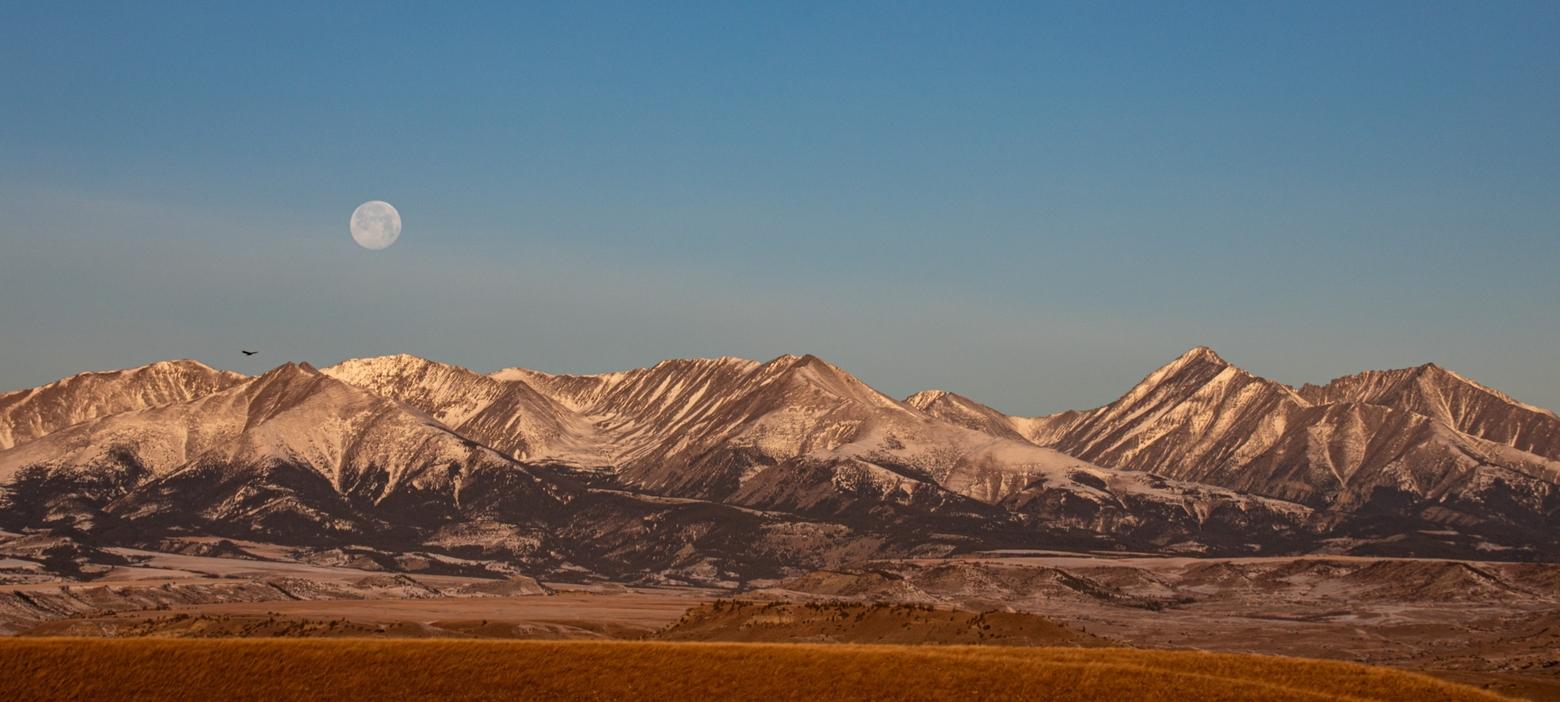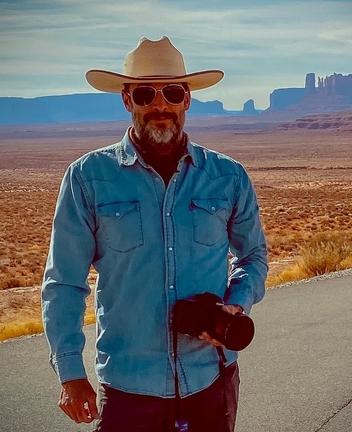Back to StoriesThe Healing Nature of Nature Therapy
May 8, 2024
The Healing Nature of Nature TherapyIn a world stuffed with technology and distraction, Bradley Orsted reaches out to touch the natural world in Greater Yellowstone
Story and
photos by Bradley Orsted
The
wildness of Greater Yellowstone inspires wonder and awe in everyone willing to
venture out and touch it, walk in it, observe its wildlife, and breathe in its
air. We are beginning to understand time in nature also has a curative effect
on everything from PTSD, depression, anxiety and substance abuse, to lowering
cortisol levels. Many therapists have begun seeing their clients in the woods
in lieu of a stuffy office, using the backdrop as an integral part of the
treatment. But what exactly is nature therapy, how does it work, and how can we
self-medicate?
For me, nature therapy is any time I spend out of doors where my central
nervous system settles down. It’s really that simple. Any place I can stroll or
sit long enough for the birds to go back to what they were doing will suffice. With
some patience and practice, this can be achieved almost anywhere: a city park
has the same restorative benefits as an alpine lake. Sound crazy? Science is
finally catching up with what poets and indigenous cultures have known all
along: Nature heals. Mindful time in the outdoors unlocks the medicine already
hard-wired within all of us. But how?
When I enter the nature headspace, especially in grizzly country, I become a heightened sense of awareness. My elevated consciousness stimulates a feeling of connection and interrelationship with the world around me.
Pick a
religion. Go ahead, any religion. I’ll bet there is a prophet or disciple who was
either sent, or willingly sought out the wilderness for wisdom and healing.
From desert hermits to the ascetics, human beings have been venturing into
nature to navigate the wilderness both underfoot and within since the dawn of
time. Black Elk, the well-known holy man of the Oglala Lakota went to the Black
Hills to seek his visions, Muhammed received his divine message in a cave,
while the Buddha sat under the Bodhi tree. Both Jesus and Moses went to the
wilderness. Christ spent his 40 days wandering in the desert while Moses got 40
years; nepotism on an Old Testament scale. The point is, if we’ve sought wisdom
and healing in nature for 99.9 percent of our time as a species on this planet,
why are we now turning to the not-so-great indoors for healing?
Our brains
and physiology evolved in nature, in the great out of doors. Mountain meadows,
trees, water, fire, wind and skies. We are all biophilic. As the
environmentalist-poet Gary Snyder says, “Nature is not a place we visit. It is
home.” It’s where we developed as a species, and what we know at our collective
core. We did not evolve in these boxes within boxes inside boxes we call homes that
are artificially heated or cooled to match our ever-present whims, and where we
self-lambaste with technology, constantly overstimulated, but never really
getting anywhere. We need sunlight and fresh air more than ever to keep us
balanced.
Even animals
seem to seek nature therapy. I know it sounds odd, and it may just be a
longshot, but here’s what I’ve seen: When animals are wounded or sick, they
seek draws, ravines or thickets to lie down in while trying to hide, rest and
heal. Bears dig roots for their medicinal values. Nature is their pharmacy. I’ve
also witnessed both bison and bears appear to enjoy the views in Yellowstone National
Park, while pausing to acknowledge it. Passive awe. It’s one of the key
components to a healthy lifestyle.
When I
enter the nature headspace, especially in grizzly country, I become a
heightened sense of awareness. My elevated consciousness stimulates a feeling
of connection and interrelationship with the world around me. My internal
dialogue slows. My mind turns to beauty and introspection. I remind myself it’s
good to be a little cold, picking up the pace on the trail. In nature, I’m
sometimes overcome with such a sense of tranquility and compassion that my body
seems to transcend the corporeal world. My central nervous system begins
quieting because I am home, and this is recognizable to my being. The reason
this is happening is easily explained in the brain.
When we
experience nature, even on a superficial level, we’re triggering our bodies to
release “happy hormones.” These four feel-good hormones are dopamine, serotonin,
endorphins and oxytocin. As neurotransmitters, they are naturally released
inside our brains when we merely spend time outside. Simultaneously, we’re
lowering blood pressure and allowing our brains to take a much-needed break
from the barrage of a multitude of mostly meaningless decisions we make every
day.
Five hours a month is the recommended amount of time we need outside to
boost our immunity, elevate creativity, and help settle the central nervous
system, aka homeostasis. That’s only 10 minutes per day outside walking, or
even just sitting in the sunshine, to reap the restorative rewards of Mother Nature.
Fold in a digital detox as well during those 10 minutes a day outside and watch
your focus return. Don’t believe me? Try it for a week.
We did not evolve in these boxes within boxes inside boxes we call homes ... We need sunlight and fresh air more than ever to keep us balanced.
Writing
this in the shadow of the Crazy Mountains in south-central Montana, I’m
fortunate to have a 360-degree view of wilderness around me. However, I also
spend a lot of time at a city park next to the wastewater treatment facility
that parallels a busy set of train tracks. When the wind blows just right off
the Crazies and across the pungent retaining pool, and as a nearby BNSF train barrels
for Billings, I can still smile and feel the energy coming off the earth.
It doesn’t
sound like the perfect setting for nature therapy. That’s why I enjoy it so much.
Having spent enough time in the wild, I can now access that mindfulness
wherever I am. It doesn’t matter if it’s downwind of a retaining pond next to a
speeding locomotive, or navigating a busy city sidewalk. I can breathe deeply,
control my anxiety, and lean into the calm knowing I’m home.
________________________________________________________________________________________________________________________
Mountain Journal is the only nonprofit, public-interest journalism organization of its kind dedicated to covering the wildlife and wild lands of Greater Yellowstone. We take pride in our work, yet to keep bold, independent journalism free, we need your support. Please donate here. Thank you.
Related Stories
January 21, 2025
Why ‘Yellowstone’ Became a Dirty Word to so Many Montanans
No one ever claimed the hit cowboy soap opera was aiming for realism. But for Montana locals, the show’s many day-to-day...
November 22, 2023
The Arrival of Harriman’s Iconic Trumpeter Swans
By the early 1900’s trumpeter swans were nearly extinct, but concerted efforts have reinvigorated their numbers. Land around Harriman Ranch State...
July 11, 2024
Counting Cougars
In this guest essay, photographer and Yellowstone guide MacNeil Lyons recounts the top 10 most thrilling mountain lion sightings he's experienced....






